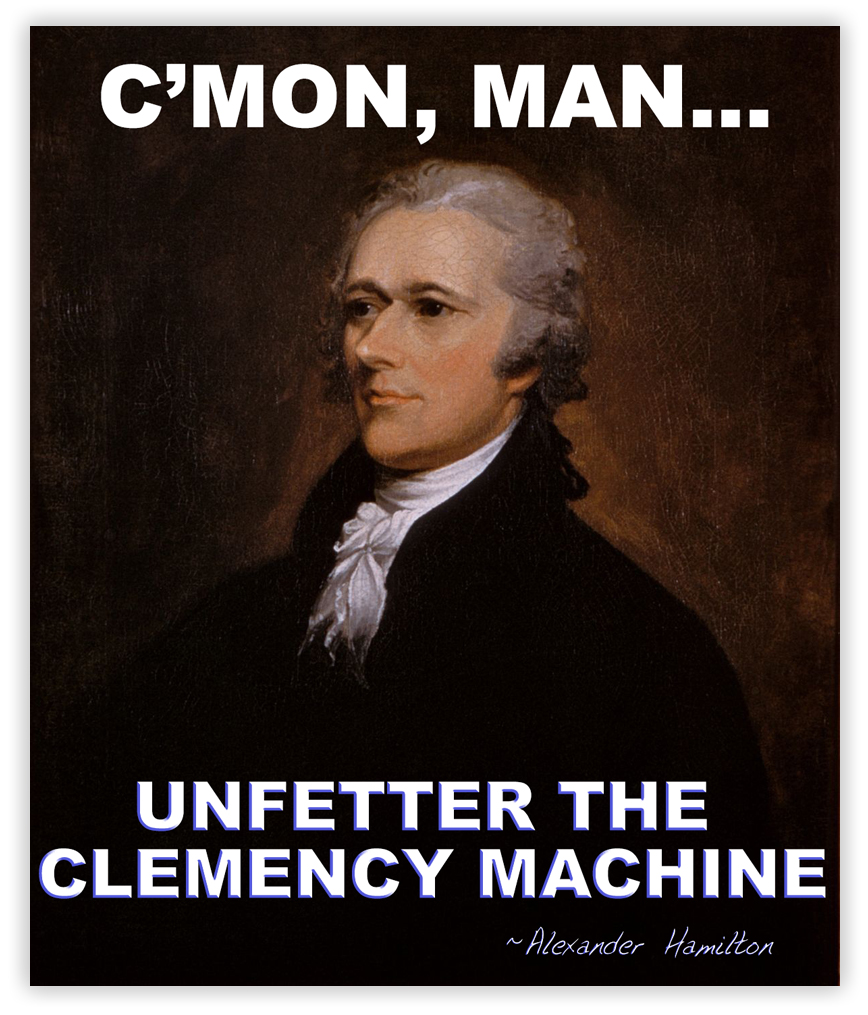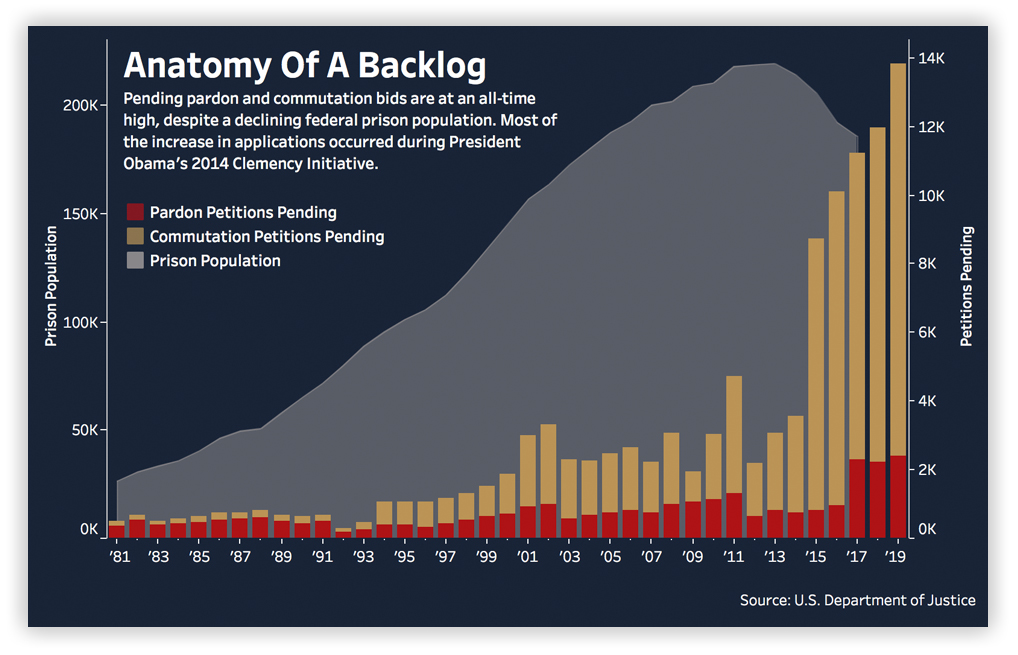We post news and comment on federal criminal justice issues, focused primarily on trial and post-conviction matters, legislative initiatives, and sentencing issues.

MORE CALLS TO USE THE FIRST STEP ACT TO END-RUN CLEMENCY
 Over 11,400 commutation petitions languish at the Justice Dept.’s Office of the Pardon Attorney, record numbers for a clemency system that America’s founding fathers designed to be, in the words of Alexander Hamilton, “as little as possible fettered or embarrassed.”
Over 11,400 commutation petitions languish at the Justice Dept.’s Office of the Pardon Attorney, record numbers for a clemency system that America’s founding fathers designed to be, in the words of Alexander Hamilton, “as little as possible fettered or embarrassed.”
An article published last week by Law 360 detailed the precipitous decline in use of federal clemency over the past 150 years, and suggested enhanced use of the sentence-reduction procedure changes in the First Step Act.
DOJ involvement in clemency began during the Civil War, because President Lincoln was overwhelmed by personal visits from “crying mothers and wives of disgraced soldiers” pleading for pardons. By 1898, all clemency petitions were routed through DOJ before maybe getting to the White House. Still, until about 50 years ago, presidents generally granted 13% to 40% of petitions.
Since then, the numbers have fallen to the single digits until President Obama. His 2014 clemency initiative was a public relations victory but a bureaucratic disaster, generating more commutation petitions in a year than OPA had received in the previous 24 years combined.
Despite granting over 1,700 commutations, Obama hardly made a dent in the overall prison population, “There could have easily been 20,000 commutations,” former OPA attorney Sam Morison argued. “That would have been about 10% of the prison population. That would have been historic.” But as it is, Obama left office with over 11,350 commutation petitions still pending.
 Morison argues that the clemency power “will never function correctly until that Office of the Pardon Attorney is out of the Department of Justice.” While President Trump’s administration has been studying that idea, nothing has come of the White House roundtable group that has been meeting on the proposal for more than a year. Georgetown University law professor Shon Hopwood, noting Trump’s widely publicized pardons and commutations, said many petitioners will inevitably try “going around the system,” but “it shouldn’t require Kim Kardashian’s assistance to get clemency.”
Morison argues that the clemency power “will never function correctly until that Office of the Pardon Attorney is out of the Department of Justice.” While President Trump’s administration has been studying that idea, nothing has come of the White House roundtable group that has been meeting on the proposal for more than a year. Georgetown University law professor Shon Hopwood, noting Trump’s widely publicized pardons and commutations, said many petitioners will inevitably try “going around the system,” but “it shouldn’t require Kim Kardashian’s assistance to get clemency.”
Hopwood instead has been citing the First Step Act’s expansion of compassionate release as a more accessible option. I have been writing about this sleeper of a sentence-reduction provision for six months (see “Will First Step Let the Holloway Black Swan Swim Again?” Update for March 26, 2019). Such releases are traditionally available only to the elderly and terminally ill, but the statute – 18 USC 3582(c)(1)(A)(i) – says nothing about illness as such. Instead, it simply permits sentence reduction based on “an extraordinary and compelling reason.”
Under the First Step Act, a defendant no longer needs approval of the Bureau of Prisons to file a motion for resentencing with his or her sentencing court.
In a forthcoming law review article, Hopwood writes that judges can consider any “extraordinary” reasons for compassionate release without having to wait for BOP approval. Former US Pardon Attorney Margaret Love calls the concept a “hidden, magical trapdoor in the First Step Act that has yet to come to everyone’s attention. This has obviated the need for the clemency process to take care of the great majority of commutation cases.”
Hopwood acknowledges that prosecutors are likely to oppose these motions, but said they could provide a safety valve in which the judiciary simultaneously helps alleviate mass incarceration and the OPA’s commutation workload. And, unsurprisingly, DOJ has argued against Hopwood’s interpretation. In a filing last January, the government said the compassionate release statute “is simply not an avenue by which defendant can secure relief from his sentence based on his post-conviction reform… The relief defendant seeks is instead properly addressed in a petition to the executive branch for clemency.”
Lots of luck with that, the authors write. “The odds of getting presidential relief are approaching zero. The office that granted 41% of all pending and newly filed clemency petitions in 1920 is on track to grant less than 0.1% under Trump…”
Law360.com, How Courts Could Ease The White House’s Clemency Backlog (Aug. 25)
Sentencing Law and Policy, Exploring how compassionate release after FIRST STEP might indirectly help with persistent federal clemency problems (Aug. 26)
– Thomas L. Root


